The Imagine Jacket
A smart, adjustable jacket designed with comfort in mind
Offering deep pressure therapy and temperature control, this jacket helps create a calming personal space. Thoughtfully built for individuals on the autism spectrum, it features subtle, easy-to-reach controls and a companion app for extra help.
Role
Application Programming
User Interface Design
Tools Used
Java
Processing
Arduino
Figma
Team
App Developer [My Role]
Hardware Engineer
UX Designer
Scope
7 Weeks
June – Aug 2023
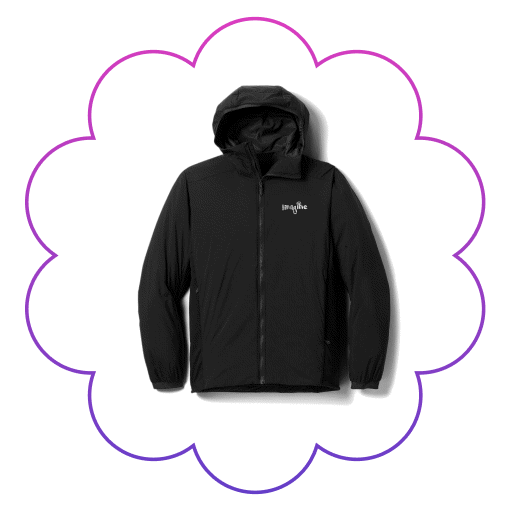
Getting to Know Our User
Understanding real needs was our first step in the process.
We dove into research and had the chance to chat with Sersha, a 14 year old girl living with Asperger. Through this, we uncovered a few common challenges they often face, things like Feeling anxious, having trouble focusing, and getting overwhelmed by sensory input. We created an empathy map to acknowledge and illustrate her concerns.
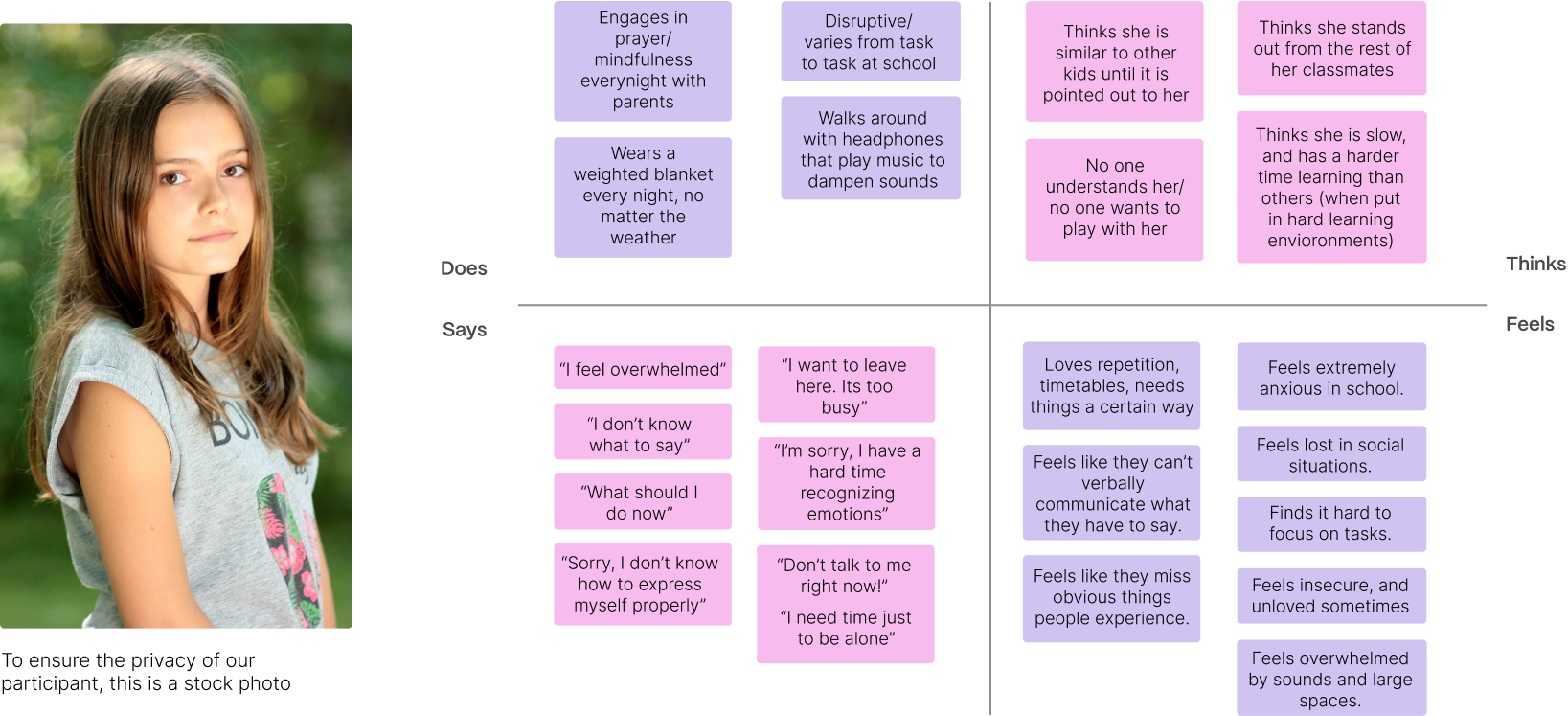
We learned that things like sound isolation, deep pressure therapy, and mindfulness can make a big difference.
Many folks with ASD often feel overwhelmed or anxious, but they also want to feel included, not singled out or different. In our conversation with Sersha, she shared that she sometimes worries about standing out or looking different from other kids. That really stuck with us, so our team made it a priority to design something that feels subtle, comforting, and easy to blend into everyday life.
The diagram below maps out both the user experience of our persona, and the three major pain points we identified.
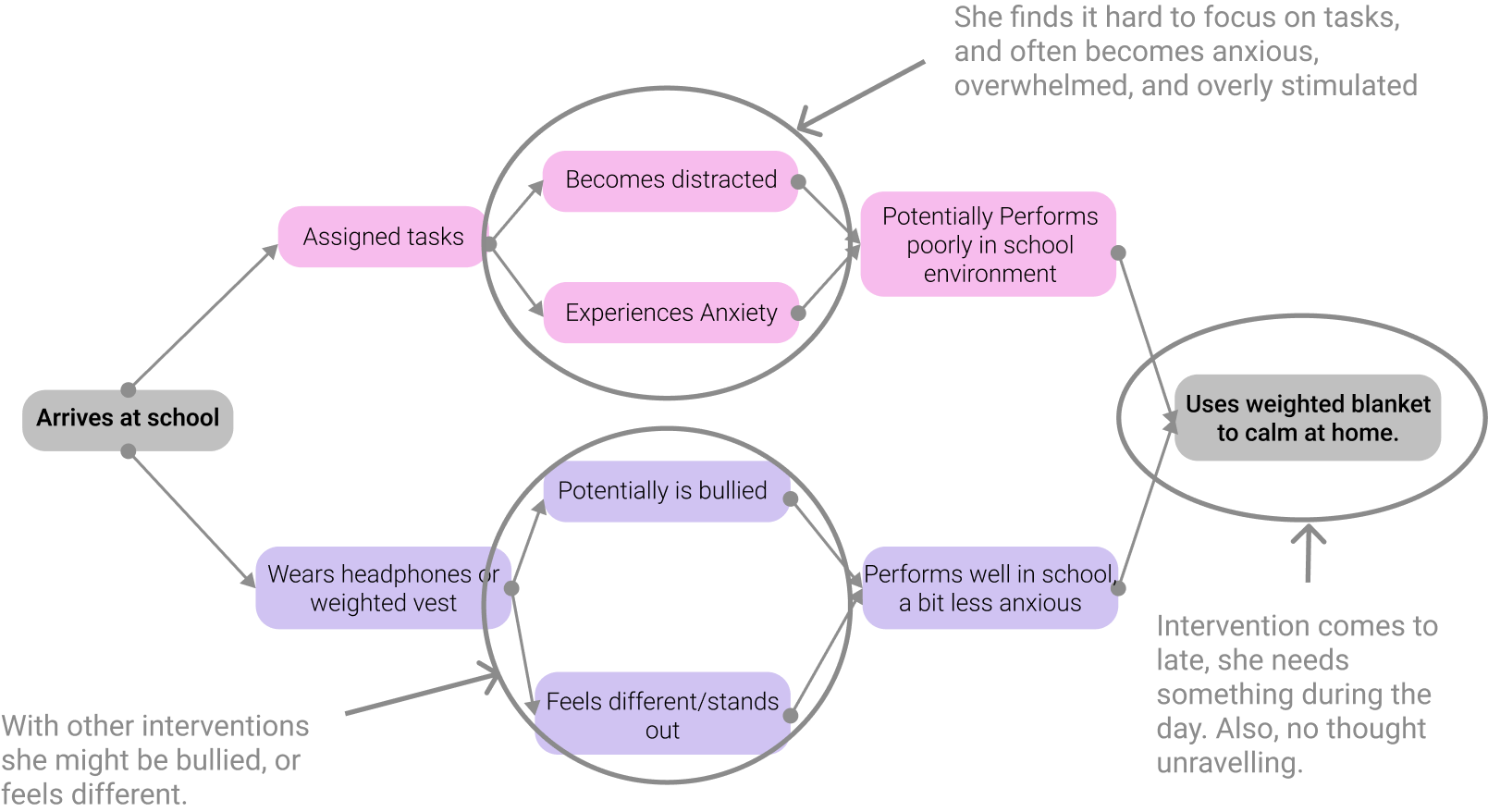
When it comes to managing sensory overload or anxiety, we noticed that people usually fall into two groups. Those using tools like headphones or weighted vests, and those going without any support at all. But both paths have their challenges: Without support, staying focused and calm can be really tough. With support, unfortunately, some people face bullying or feel like they stand. And when interventions do help, they often come a bit too late in the moment.
What’s out there and what’s not quite working.
While exploring existing products, we found the Snug Vest by Linda Fraser, an air inflated vest designed for deep pressure therapy. While effective, it lacked subtlety and could make wearers feel singled out. The Imagine Jacket builds on its pressure system but offers a more discreet, comfortable design that blends in with everyday wear.
Turning Insight Into Ideas
We focused on five key areas. Deep pressure therapy, anxiety relief, discreet design, temperature control, and calming soundscapes.
The result? A jacket that features adjustable pressure, temperature settings, and a companion app with mood tracking and soothing soundscapes.
Hidden buttons and dials let the wearer, or their caretaker, stay in control without drawing attention. Gentle air pumps in the back create a comforting squeeze around the waist.
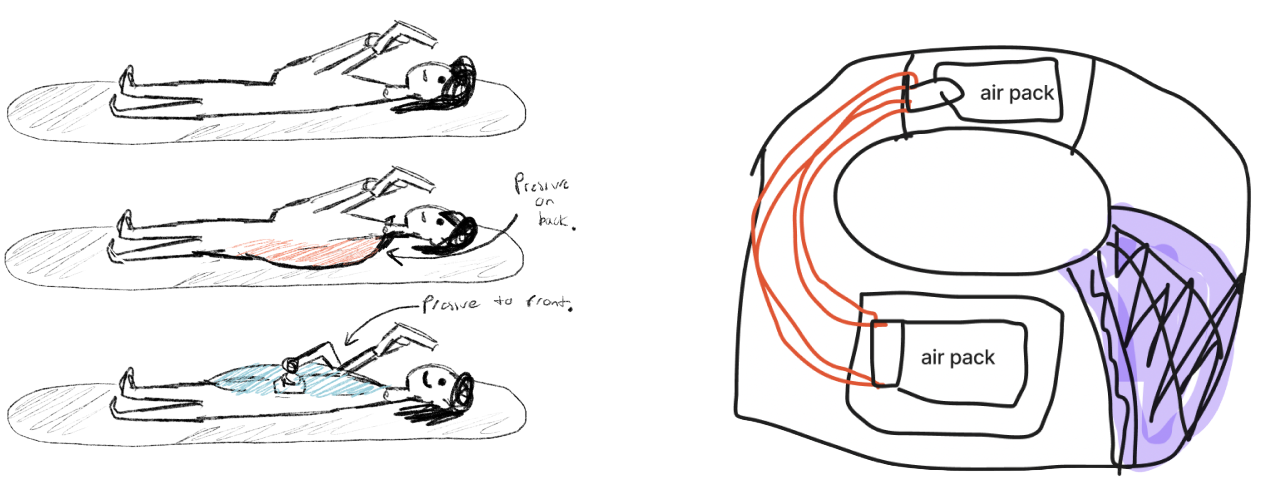
The pressure pairs with adjustable warmth to mimic a cozy hug. A little dial (potentiometer) lets the wearer tweak the temperature, sending just the right signal to built in heating pads to keep things comfy.
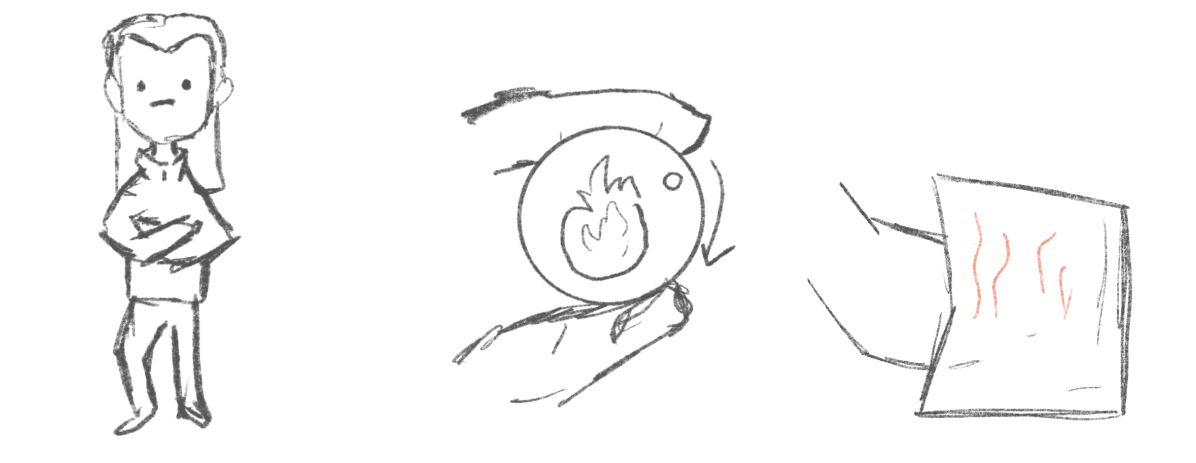
If things get too toasty, no problem - the jacket has a detachable hood and sleeves, easily removed with Velcro for a quick cool-down. A GSR sensor at the cuff tracks emotional responses, helping the wearer or caretaker spot patterns and prep for future moments.
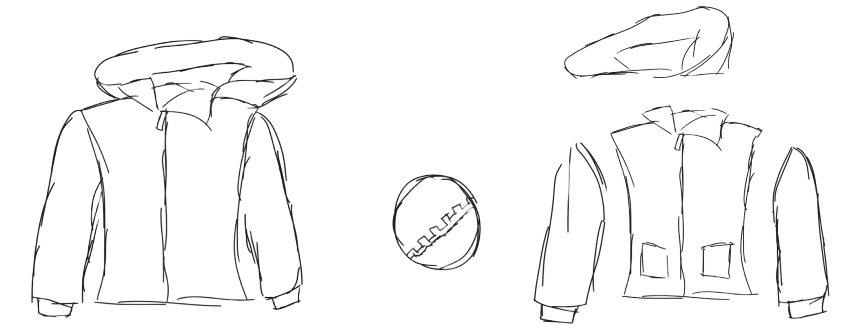
As a final fun, soothing touch to the physical portion of the prototype, there’s a hidden fidget toy pocket on the side. When focus wobbles or nerves kick in, the wearer can unfold the pocket, grab their favorite toy, and tuck it all away again when they’re ready.
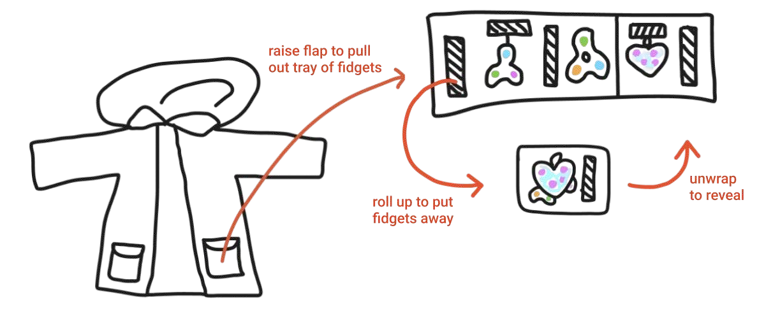
Building a Digital Companion
Our digital app went through many twists and turns.
We went through several iterations, including exploring both web and mobile platforms, as well as different jacket control methods.
We initially planned two way control, physical and digital, but found the jacket’s buttons more accessible. To avoid confusion, we focused the app mainly on monitoring. Below are our initial web prototype and early mobile wireframe, both featuring two way control before refinement.
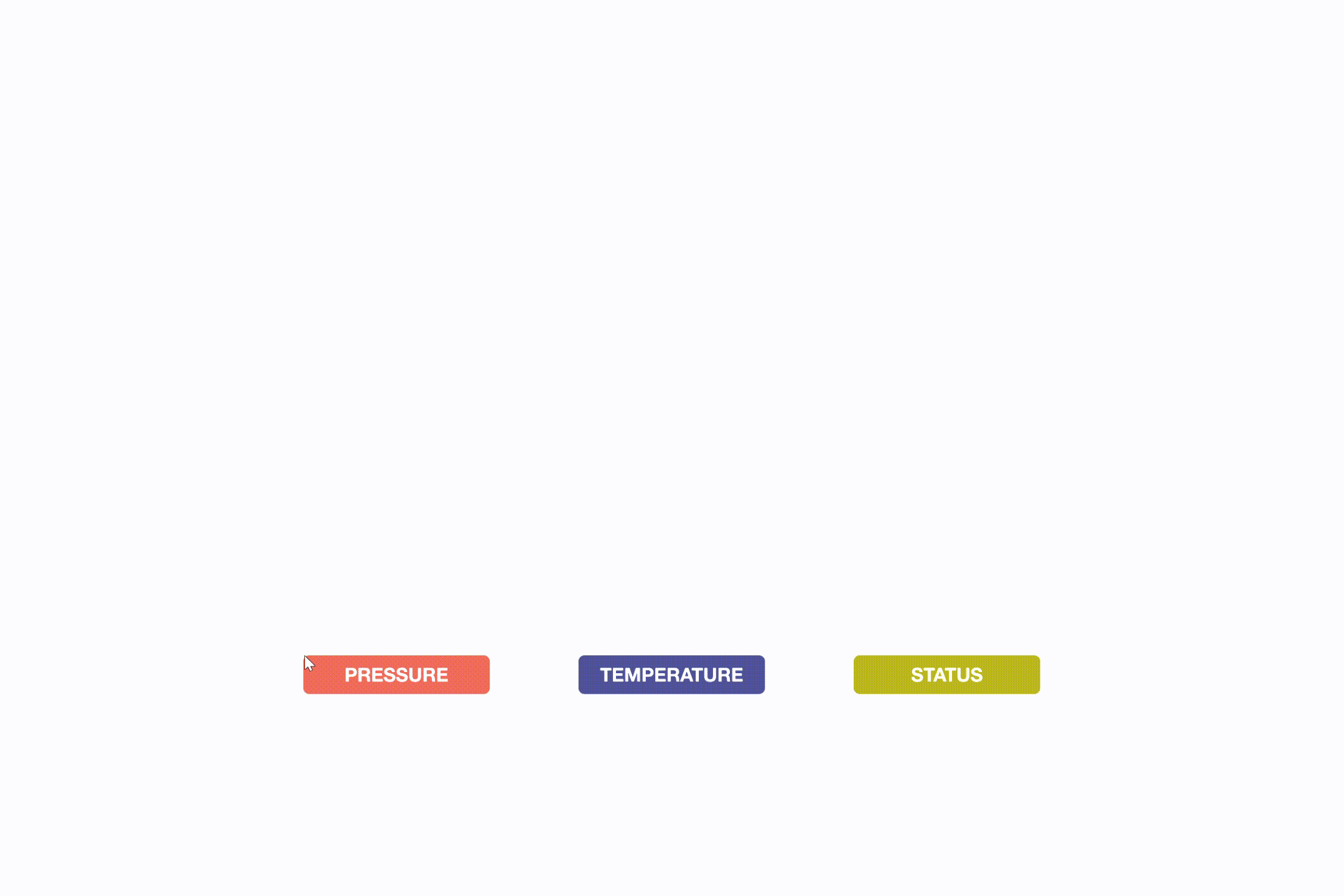
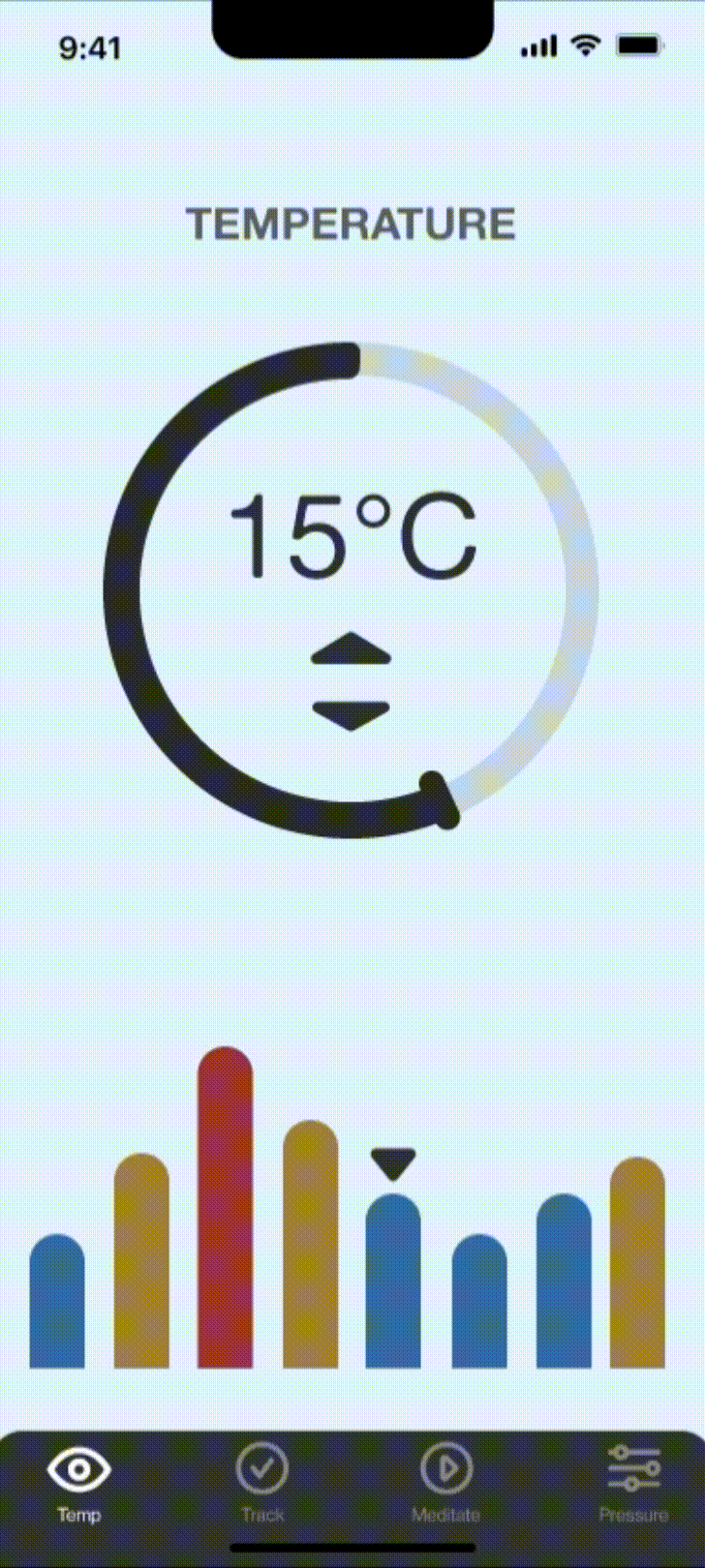
Instead, we went with a simple, user-friendly interface. A tracking tab for GSR readings, a temperature tab to monitor heat levels, and a music tab with calming tracks to help the user feel grounded.
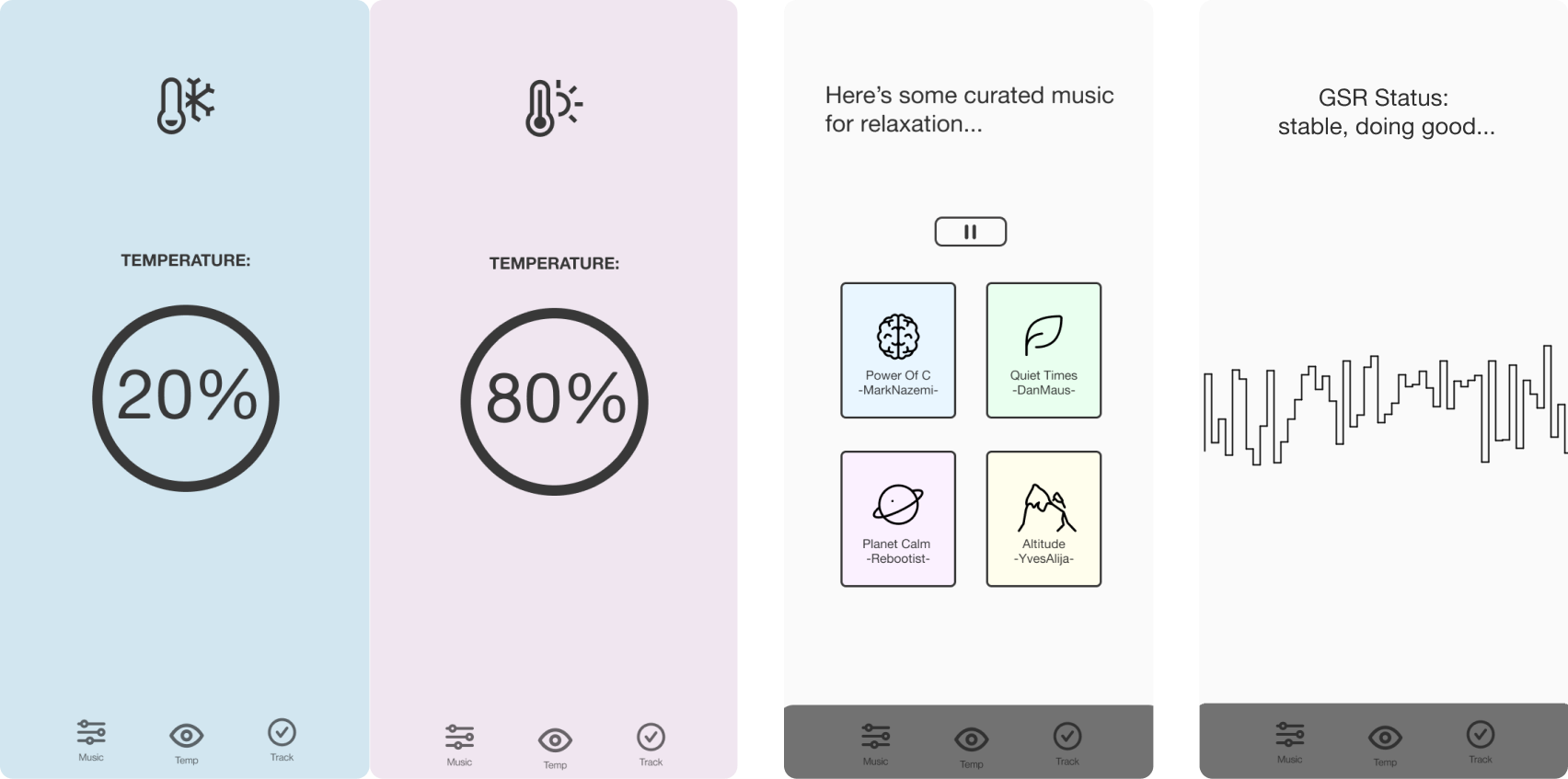
To link the jacket to the app, sensor data is sent from the Arduino to Processing via serial communication
This provides a constant stream of information, one byte at a time (with a baud rate of 9600), allowing the app to update and provide accurate results for the user to monitor.
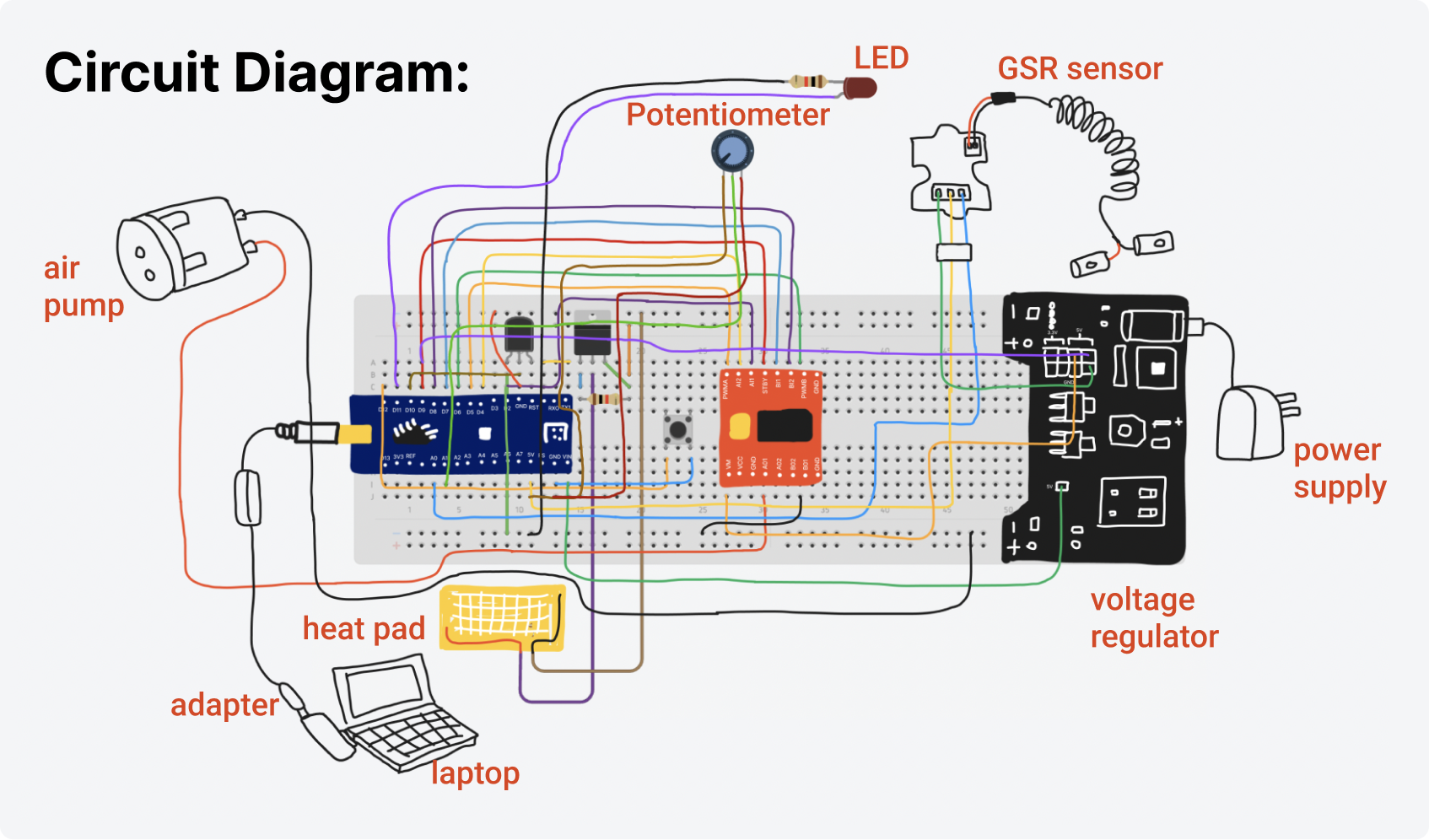
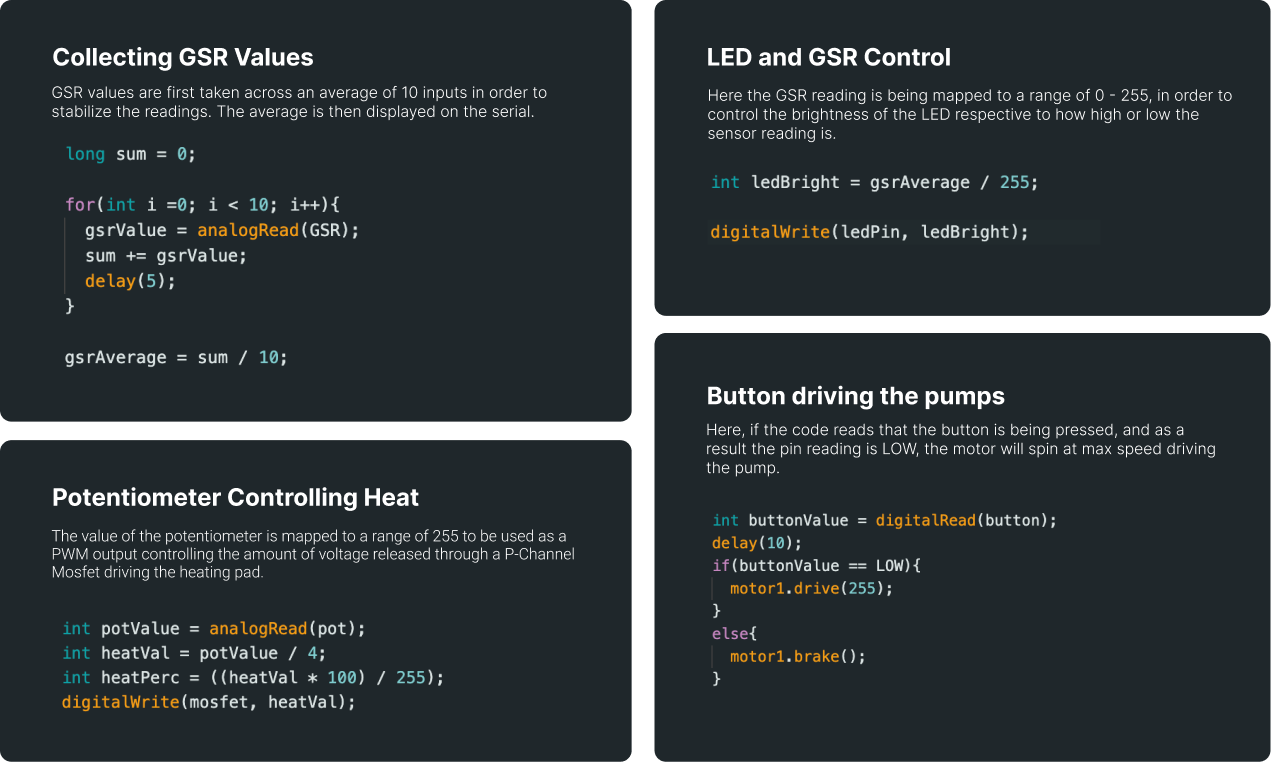
Tweaks, Tests, and Perfecting the Look
We ran into our fair share of roadblocks during the process.
Our air pressure idea sounded great...until the airbags failed to properly hold air. After testing balloons and DIY fixes, we made a quick pivot to water pressure, which ended up working well. It gave a soothing weight and smoothly shifted pressure between the front and back pockets.
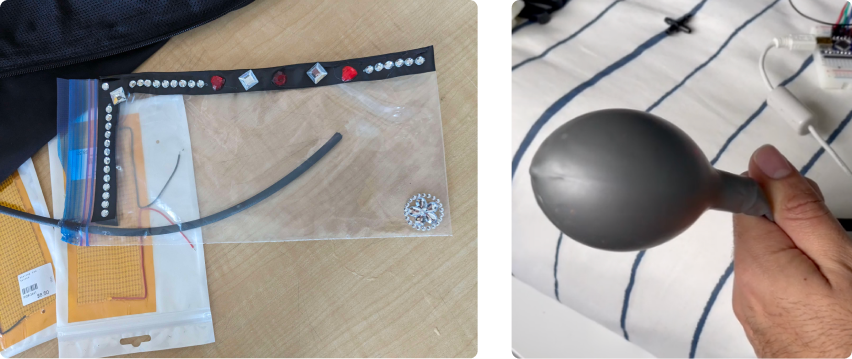
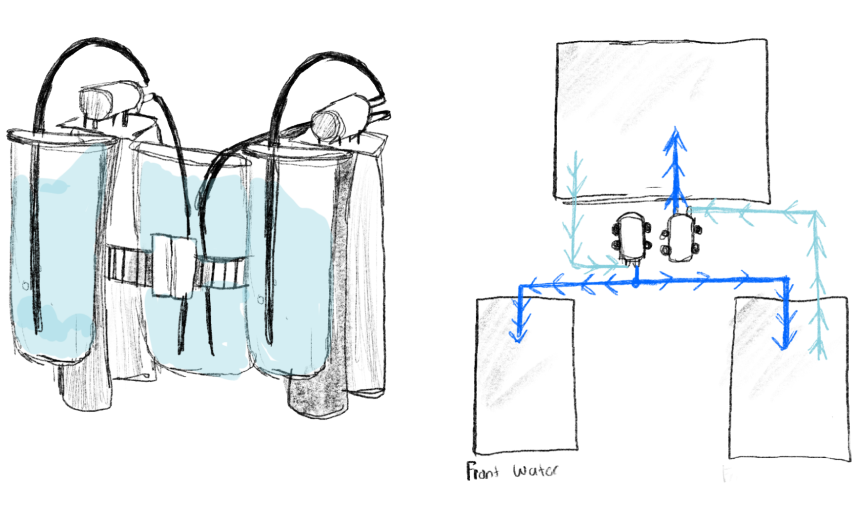
For our first cardboard prototype we used Ziplock bags to hold the fidget toys and water. Later on, we upgraded to IV bags and fabric pockets for a more sleek and secure feel.
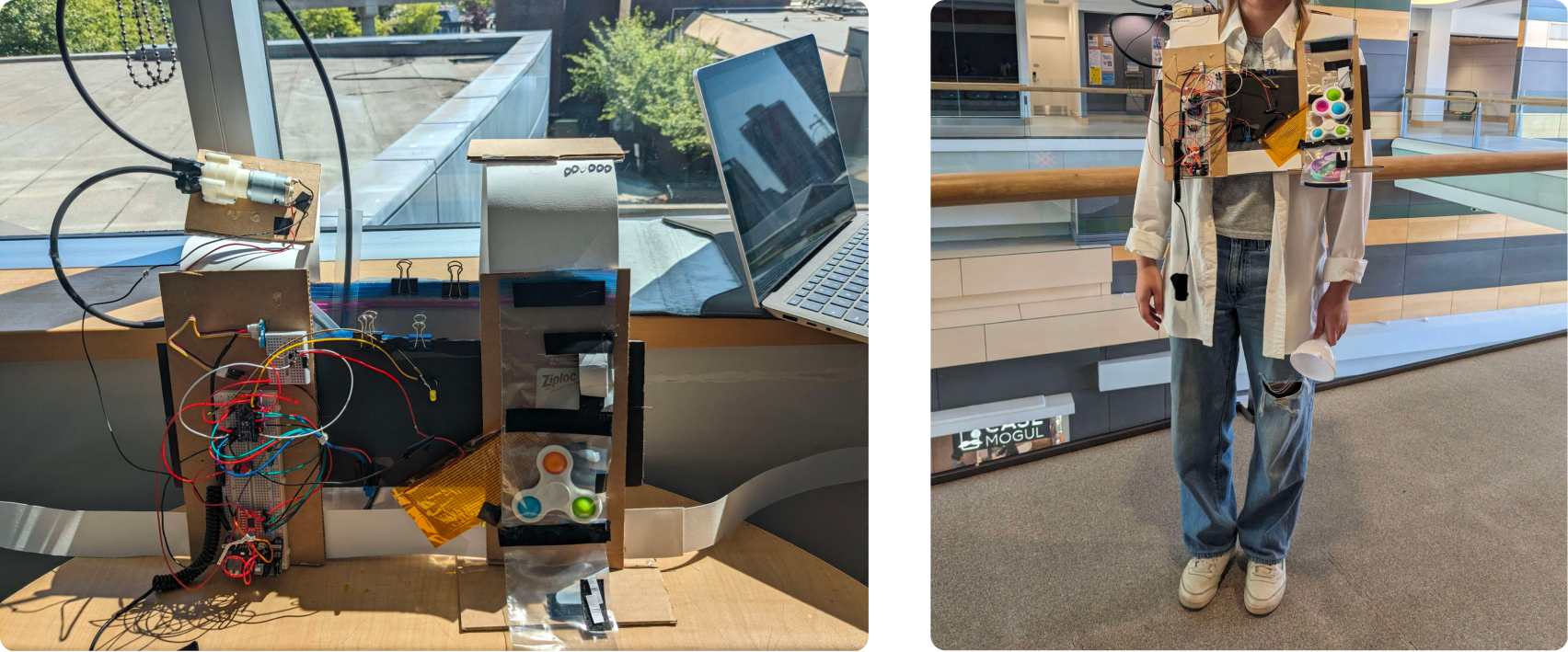
The Final Fit
The final jacket features a stretchable fabric belt with water pockets in the front and back, secured with Velcro for an adjustable fit. Color-matched buttons and a dial blend into the design, and the fidget toy is tucked away in a hidden foldable pocket.
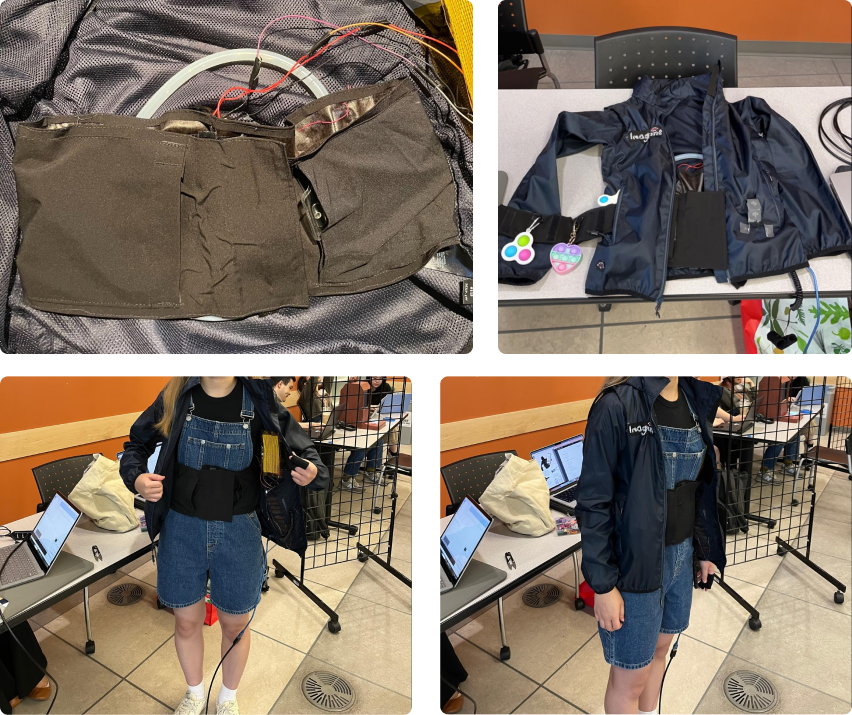
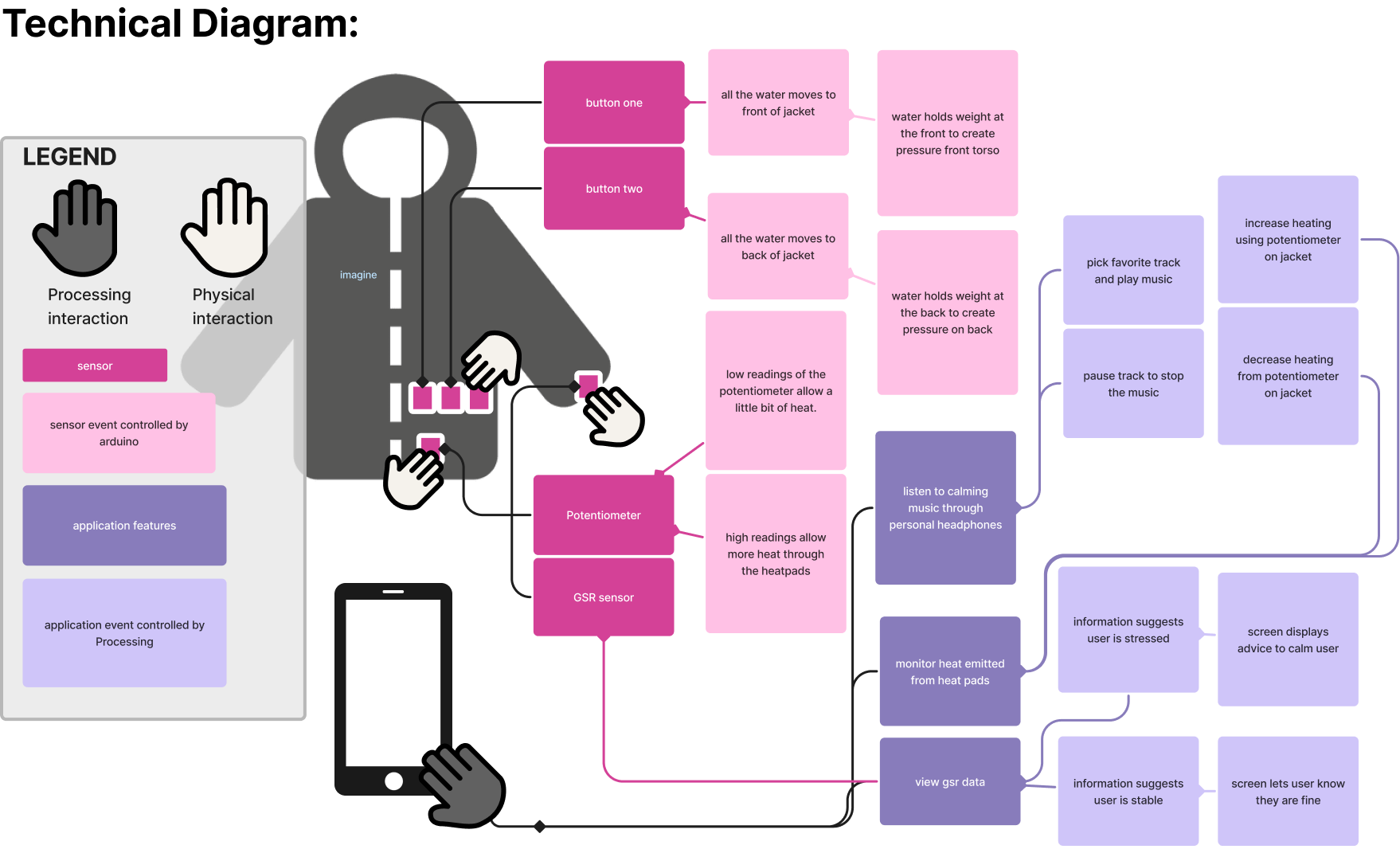
What I Picked Up
The “curb cut effect” and how making accessible products retrospectively helps everyone.
The “curb cut effect” shows how designs made for people with disabilities often end up helping everyone. While this jacket was made for people with ASD, its features like deep pressure, warmth, and soundscapes support anyone dealing with anxiety, stress, or sensory overload. Discreet design means it blends into everyday life, no stigma, just comfort
A major challenge my team faced was technical and physical setbacks between faulty components and configuring parts. In hindsight, building in more buffer time for testing and troubleshooting, along with regular check-ins to flag issues early, would’ve made the process a lot smoother.
Creating a design that looked and felt like everyday clothing while still being functional also proved to be more difficult than anticipated. During early iterations on the physical prototype we found parts and materials to be too bulky. This highlighted the importance of balancing aesthetics and practicality from the very start to avoid costly redesigns later on.